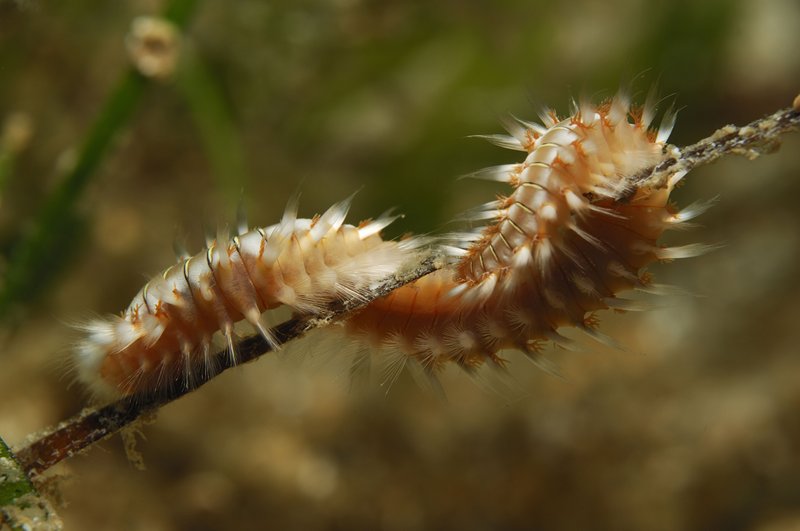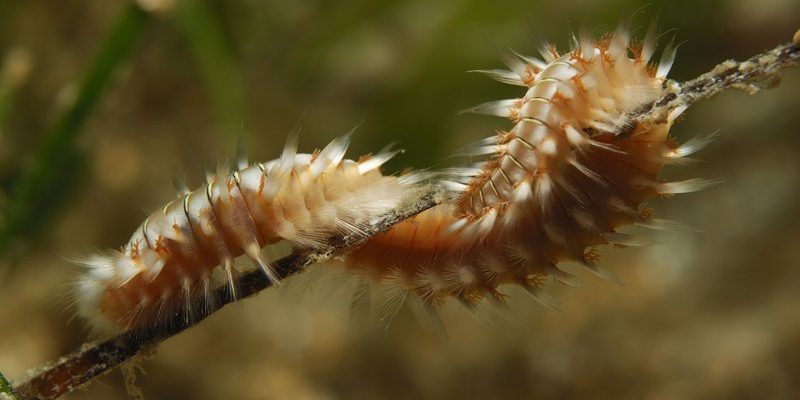
Honestly, bristle worms can seem a bit weird and even off-putting at first glance. But once you get to know them, they reveal all sorts of interesting traits. These worms are like the unsung heroes of the ocean floor, playing essential roles in their ecosystems. So, understanding the significance of those red tufts can help us appreciate not just bristle worms but the intricate web of life beneath the waves.
What Are Bristle Worms?
Before we get into the specifics of those red tufts, let’s take a step back and look at what bristle worms actually are. These creatures belong to the class Polychaeta, which means “many bristles.” And guess what? They come in all shapes and sizes! Imagine a tiny, segmented body bristling with hair-like structures called setae, which help them move through their habitat.
Bristle worms are typically found in various marine environments, from tidal pools to deep seas. They burrow into the substrate or live freely, feeding on organic matter. Think of them as nature’s recyclers—helping break down decaying materials and enriching the ocean floor.
You might be surprised to know that the red tufts on bristle worms are actually modified structures called **parapodia**. These are fleshy extensions of the body wall, and they serve important functions like locomotion and respiration. The vibrant red color is not just for show; it plays a crucial role in their survival.
Why Do Some Bristle Worms Have Red Tufts?
So, you’ve spotted those striking red tufts. What’s going on there? The red coloration mainly comes from **hemoglobin**, a protein that carries oxygen. In bristle worms, this adaptation allows them to thrive in low-oxygen environments, like mudflats or sandy substrates.
Imagine if you had to hold your breath every time you went for a swim. Not fun, right? Bristle worms, with their red tufts, have a better chance of snatching up oxygen from the water, ensuring they stay healthy and active. These tufts are like little gills, helping them breathe better while they dig around in the mud.
But here’s the thing: not all bristle worms have red tufts. The presence of these features often depends on their species and habitat. Some species are adapted for different environments, leading to variations in color and structure. So, those red tufts are a clear indication of their specific adaptations.
The Role of Red Tufts in Locomotion
Beyond just breathing, those red tufts or parapodia are also essential for movement. When bristle worms want to get around, they use their parapodia like oars, pushing themselves through the water or the ocean floor. Think of it as a tiny, underwater race—each wiggle and movement helps them navigate their world more efficiently.
When they want to burrow into the substrate, the parapodia help grip and pull their body forward. This makes it easier for them to dig into the sand or mud and find food. The red tufts increase their surface area, making them more effective at pushing and pulling through their environment.
Plus, it’s not just about moving around. Those tufts can help bristle worms evade predators. By quickly burrowing into the substrate, they can hide from fish and other threats. It’s a clever survival strategy, showing how multifunctional these little structures can be.
Are Red Tufts a Warning Sign?
You might have heard the saying, “red means danger.” In the case of bristle worms, that saying doesn’t fully apply. While some animals use bright colors as a warning to stay away, the red tufts in bristle worms don’t indicate toxicity. Instead, they reflect adaptations that help them thrive in their environments.
That said, caution is always a good practice in nature. Some bristle worms can indeed have spines that could irritate human skin, so it’s best to handle them with care. Those red tufts are not a direct signal to avoid them but could serve as a reminder to respect their space in the ocean ecosystem.
Think of it this way: just because a creature is colorful doesn’t mean it’s dangerous, just as not all plain creatures are harmless. Bristle worms are more about function than fashion, using their vibrant colors to enhance their functionality in the underwater world.
Red Tufts and Environmental Indicators
Now, let’s consider another interesting aspect of those red tufts: they can act as indicators of environmental health. Because bristle worms thrive in specific conditions, changes in their populations can signal shifts in the health of marine ecosystems.
For instance, if you notice a decline in bristle worm populations, it could hint at problems like pollution or habitat degradation. On the flip side, if the red tufts are flourishing, it may suggest a healthy, well-balanced environment. Researchers often study these worms to gauge water quality and overall ecosystem health.
So, if you’re passionate about marine life and conservation, learning about bristle worms, especially those red tufts, can be incredibly insightful. They’re not just worms; they’re vital components of marine ecosystems that help scientists monitor and protect our oceans.
Bristle worms, especially those with red tufts, are more than just unique little creatures hiding beneath the sea. They serve vital roles in their ecosystems, showing us the importance of every part of marine life. Whether it’s their ability to breathe in low-oxygen environments, their effective locomotion, or their role as environmental indicators, these worms give us a glimpse into the complexity of ocean health.
Next time you spot a bristle worm with vibrant red tufts, take a moment to appreciate the roles they play and the adaptations they’ve developed over time. They might not be the flashiest creatures in the ocean, but they definitely deserve our curiosity and respect.

